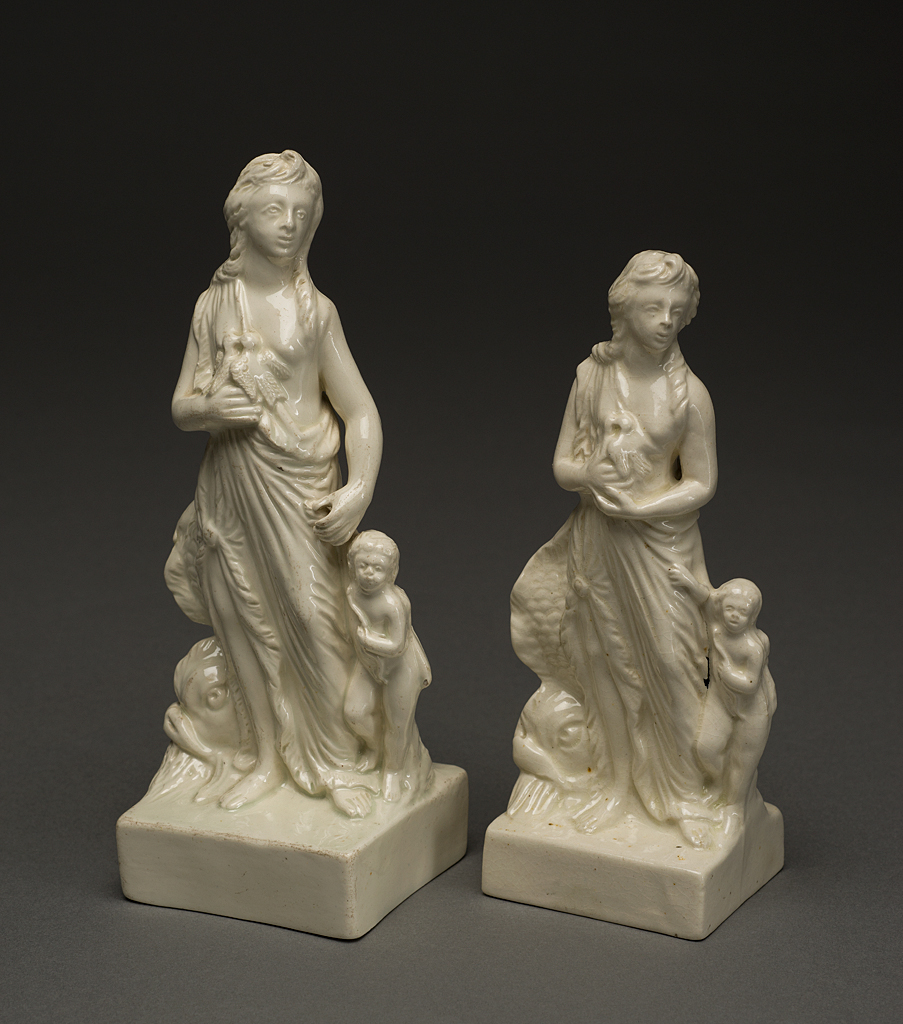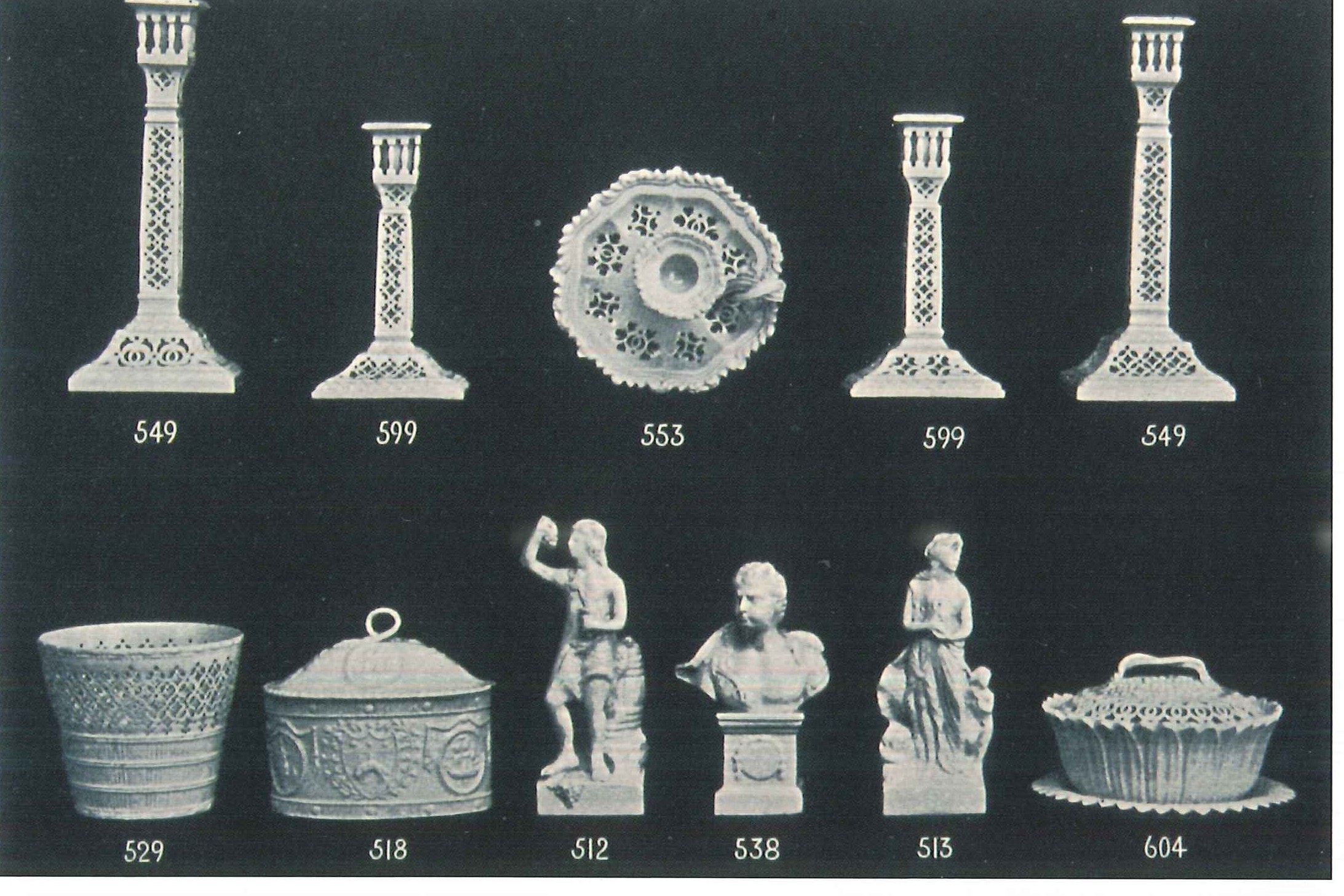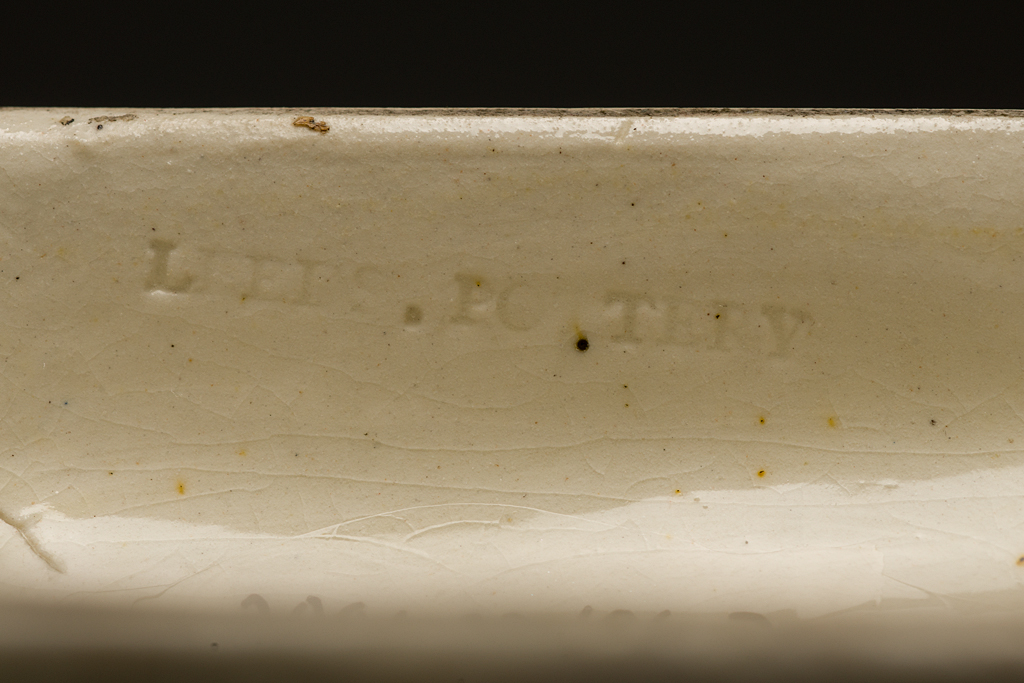Earthenware figures made by the Leeds Pottery in the 18th century are extremely rare today. Collectors of English earthenware figures would be naturally drawn to these scarce objects. But buyer beware! Reproductions of these figures (along with a wide variety of tablewares) were made in creamware in the late 19th and early 20th centuries by the Senior family. According to the research of John Griffin, sometime between 1888 and 1895, James Senior started producing creamwares in an 18th-century style, many based on the products and some using the same molds from the Leeds Factory of Hartley, Greens & Co.

Figure of Venus (right), Seniors Family, Leeds, Yorkshire, England, ca. 1890s-early 1900s. Impressed “LEEDS POTTERY” Lead-glazed earthenware (creamware). 2006.33.106.2, Museum Purchase with funds provided by Ray J. and Anne K. Groves.
For comparison, we have two earthenware figures of Venus — also known as Charity. The 18th-century original is on the left and the later reproduction is on the right. At first glance they appear very similar. Telltale clues help differentiate one from the other. Although it is difficult to see, the molding of the 18th-century example is much more detailed and crisper – especially in the area of the love birds and the drapery. Creamware reproductions made by Senior family often have a crazed, slightly greenish-colored lead glaze. One helpful piece of documentation is the existence of a 1913 trade catalogue produced by W.W. Slee of Leeds. An identical figure to the example on the right appears as No. 513.

To learn more about Leeds Revival pieces and the clues that reveal their deception, please register for Connoisseurship and Artful Deceptions: Understanding 18th-Century English Ceramics, a one-day decorative arts forum at Historic Deerfield.
